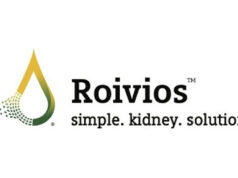 RenalSense recently announced it has secured US$14 million to bolster the global commercialisation of its current product, the Clarity RMS, expand clinical validation to additional clinical settings, and advance the release of its next-generation products based on its sensor platform.
RenalSense recently announced it has secured US$14 million to bolster the global commercialisation of its current product, the Clarity RMS, expand clinical validation to additional clinical settings, and advance the release of its next-generation products based on its sensor platform.
The Series A financing round was led by BlueRed Partners Fund (Singapore) and includes several large, healthcare-focused family offices, as well as existing shareholders.
The Clarity RMS, RenalSense’s first commercially available product, is a critical care monitoring system that has been clinically proven to facilitate early detection of changes in renal function and acute kidney injury (AKI) risk, as well as treatment monitoring, according to a company press release. It has gained US Food and Drug Administration (FDA) clearance as well as CE certification, and is installed in tens of general and cardiovascular operating rooms and intensive care units (ICUs)—as well as transplant and COVID-19 units in leading medical centres in the USA, Europe and Israel.
Future-generation, sensor-based products will aim to provide additional diagnostic data about renal function and the functioning of other vital organs, with the intention of being implemented beyond the critical care setting, the release adds.
In addition to existing distribution partners Fresenius Medical Care (Europe), Medline (North America) and Gloryway (China), over the past year RenalSense has expanded its global marketing network with new distributors in eastern Europe, Israel, and most recently in Taiwan with PAHSCO.
“With the recent publication of clinical data demonstrating the clinical value of the Clarity RMS in the ICU setting, we are forging ahead with validation in additional areas like cardiology and anaesthesia, in parallel with developing our pipeline of sensor-based products,” said Avi Kleiman, CEO of RenalSense. “We are excited to have new investors on board who share our vision and understand the importance of digitally monitoring real-time renal function, bringing this parameter on par with the other vital signs of hospitalised patients.”












